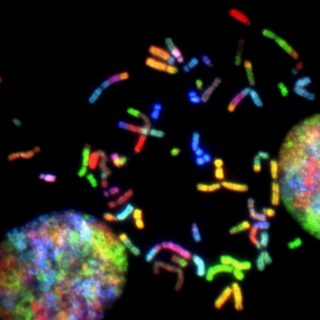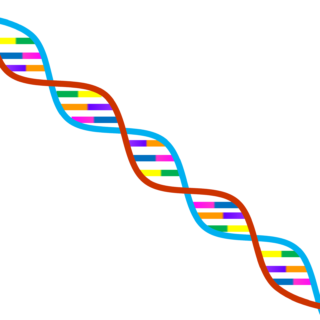Understand my data
The report produced by CopaQ will include several pieces of information about your genealogy and your genome. The linking of your data with the huge BALSAC file will allow us to discover your ancestral origins from a regional perspective.

What BALSAC is ?
The BALSAC population file is built based on the records of the Quebec Civil Registry. These records have been computerized and linked together. BALSAC is under development since 50 years at the Université du Québec à Chicoutimi and covers all regions of Quebec from the beginning of European settlement in the 17th century to the present day.
Your personalized genealogical report
The data from BALSAC will be used to reconstruct your genealogy. You will then receive geographic maps of the location of your ancestors through generations and other genealogical indices, including :
- The number of total and distinct ancestors
- The genetic contribution of your ancestors
- The place and date of arrival (or marriage) of the first immigrant founders
- The number of ancestors who are found in both the maternal and paternal branches of your genealogy (consanguinity)
- The country of origin of your ancestors
- The frequency of family names found in your genealogy, as well as the frequency of your paternal and maternal surnames in the Quebec population
Founders
If you think about your family tree, you are at the bottom. The first generation corresponds to your parents and the second to your grandparents. We then go back through the generations to include all your ancestors until we reach the founders at the top of the tree. The genealogical founders are those after whom it has been impossible to go further back. They often come from France, but can also be of another origin, for example Irish or Native American. Immigrant founders, on the other hand, are the first in their lineage to have settled in Quebec.
Paternal and maternal surnames
It is possible to follow the evolution of your paternal surname by going directly back to your paternal lineage (the one made up of male ancestors only).
Now imagine that family names are not passed down from fathers, but rather from mothers. A little harder to follow, isn’t it? What would your maternal surname be? Would its frequency be very different from the frequency of your paternal surname in the population? Let’s see what the most frequent family names in Quebec would look like if they were transmitted by women.
From Tremblay, M., Jomphe, M. & Vézina, H. (2011). Au nom des pionnières, de leurs filles et de toute leur descendance
Genealogical indices
It is also possible to calculate several indices from a genealogy, such as the coefficients of kinship and inbreeding as well as the genetic contribution.
The kinship coefficient measures the degree to which two or more people are related to each other. Its calculation considers the number of ancestors shared in their genealogy.
Inbreeding is based on the same principle, but in this case, we are interested in the sharing of ancestors between the paternal branch and the maternal branch in the genealogy of an individual. Contrary to popular belief, consanguinity is not exclusively the fact that two cousins marry each other and have children. In Western populations, close consanguinity (marriage between cousins) is low compared to other populations.
The genetic contribution represents the proportion of the genome transmitted by an ancestor to his descendant. For example, an ancestor will pass on 50% of his genome to all his children, 25% to all his grandchildren and so on.
What DNA is ?
When you took your test, you provided a saliva sample that provided access to a number of skin cells from inside your mouth. In the laboratory, scientists extracted the DNA from these cells.
Our DNA is composed of millions of base pairs that combine to form genes. Most of these base pairs (about 99.5%) are similar from one person to another. The parts that differ, the variants, may be responsible for particular traits, diseases or they may not even have any effect.
Your personalized genetic report
Once the variants that are present on your DNA are known, it is then possible to provide all sorts of information about your origins.
Specifically, your report will include:
- The genetic distance that you have to each of the other people in the population (Quebec or even the world)
- The percentage of your genome coming from each region of Quebec or continent
- The identical segments in your genome (homozygosity)
- The segments that you share with people from different regions and that come from the same ancestor (IBD)
- The number of Neanderthal variants present in the population
Genetic distance
A principal component analysis (PCA) allows you to compare two by two the genome of each individual and to visualize them in two dimensions. In other words, it represents the genetic distance that you have to each of the other people For example, if we look at a principal component analysis of individuals from different continents, groupings will be formed by each of the continents since people from the same continent are more similar to each other. Here is an exemple from de David López Herráez et al. Worldwide PCA

 We can do the same exercise for the regions of Quebec. This graph from Roy-Gagnon et al. shows that individuals of the same color, therefore from the same region, tend to group together.
We can do the same exercise for the regions of Quebec. This graph from Roy-Gagnon et al. shows that individuals of the same color, therefore from the same region, tend to group together.
Homozygosity and identity-by-descent (IBD)
In humans, each gene is present in two copies, one from the mother and one from the father. The two copies of the gene can be different or the same (coming from the same ancestor). When the two alleles are identical, it is called homozygosity. As for IBD, it’s the same, but instead of looking at the two copies of the gene in the same individual, we compare them in two different individuals.






